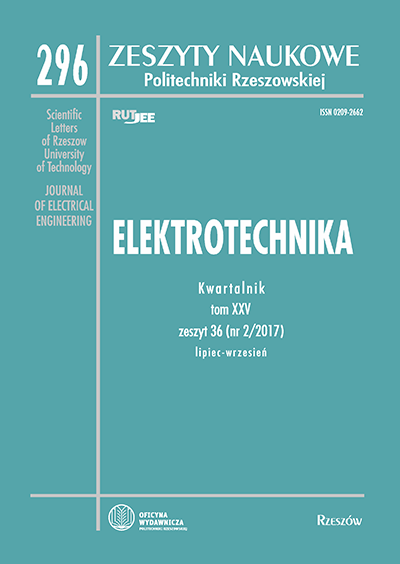Abstract
The paper describes the possibilities offered by Blitzortung's detection and location system for recording electromagnetic field components. The initial chapters describe the basics for the operation of such systems, the frequency bands used for lightning detection, and the most common detection and location methods used in such systems. Then describes the operation of Blitzortung detection and location system, its functionality and its location the stations. Describes how the system works and what kind of signals are received by the antenna of the system stations. The magnetic and electric fields from the atmospheric discharge were also compared. The numerical parameters used for field detection by the system stations are discussed. On selected waveforms the effect of the distance between the lightning discharge and the detection station in the shape of the recorded electromagnetic field signals is shown. The waveforms were also compared in terms of the detection method and the type of antennas that received signals of lightning origin. The final part of the paper describes the possibilities of using data from the system for comparative analysis with simulation results, experiments and other measurements.
References
[2] Bodzak P.: Detekcja i lokalizacja wyładowań atmosferycznych, Warszawa 2006, http://www.imgw.pl (2017).
[3] Gamracki M.: Modelowanie matematyczne piorunowych zaburzeń elektromagnetycznych w liniach transmisyjnych, praca doktorska, Politechnika Rzeszowska, Wydział Elektrotechniki i Informatyki, 2004.
[4] Egon Wanke, Richo Andersen, Tobias Volgnandt: World-Wide Low-Cost Community-Based Time-of-Arrival Lightning Detection and Lightning Location Network, 2016, http://www.blitzortung.org.
[5] Bajorek J., Gamracki M.: Effectiveness of mathematical modeling of lightning coupling to overhead conductors, International Conference on Lightning Protection, Kraków, 2002, pp. 208-213.
[6] Bajorek J., Gamracki M., Maslowski G.: Effectiveness of FFT-IFFT transformation during calculation of the electrical pulse underground surface, Proc. 28th Int. Conf. on Lightning Protection, Kanazawa, Japan, 2006, pp. 501-506.
[7] Gamracki M.: Budowa i działanie systemu detekcji i lokalizacji wyładowań atmosferycznych Blitzortung, Zeszyty Naukowe Politechniki Rzeszowskiej 296, Elektrotechnika 36, nr 1/2017, s. 27-40, p-ISSN 0209-2662, e-ISSN 2300-6358.
[8] Karnas G., Masłowski G.: Preliminary measurements and analysis of lightning electric field recorded at the observation station in the South-east part of Poland,
Przegląd Elektrotechniczny, nr 7/2014, s. 97-99, ISSN 0033-2097.
[9] Karnas G., Masłowski G. Barański P.: Power Spectrum Density Analysis of IntraCloud Lightning Discharge Components from Electric Field Recordings in Poland,
33rd International Conference on Lightning Protection, Estoril, Portugal, 2016.
[10] Haddad M.A., Rakov V.A., Cummer S.A.: New measurements of lightning electric field in Florida: Waveform characteristics, interaction with the ionosphere, and peak current estimates, Journal of Geophysical Research, vol. 117, 2012, pp. 1-26.
[11] Gamracki M.: Modelowanie matematyczne propagacji piorunowego zaburzenia elektromagnetycznego nad ziemią, Przegląd Elektrotechniczny, nr 2/2012, s. 23-25, ISSN 0033-2097.
[12] Gamracki M.: Modelowanie propagacji piorunowego zaburzenia elektromagnetycznego nad stratną ziemią, Przegląd Elektrotechniczny, nr 7/2014, s. 171-174, ISSN 0033-2097.
[13] Bajorek J., Gamracki M., Maslowski G.: Modeling of lightning electromagnetic disturbances transmitted into the ground. Proc. XVI International Conference on Electromagnetic Disturbances, Kaunas, Lithuania, 2006, pp. 1132-1137.





